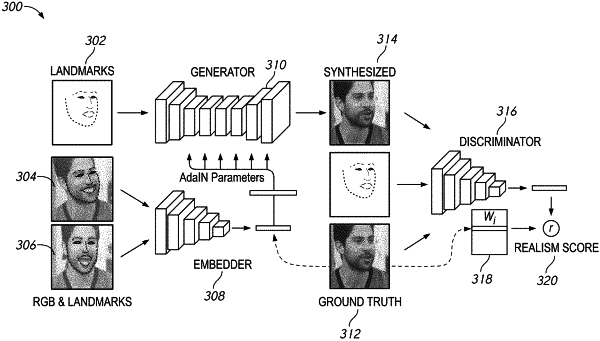| CPC G06V 40/165 (2022.01) [G06F 17/18 (2013.01); G06N 3/08 (2013.01); G06V 40/166 (2022.01)] | 20 Claims |

|
9. A method comprising:
generating difference partial frame data based on changes in partial frame data, the partial frame data including base facial information representative of a facial image from a first video frame including a facial image of a face, the difference partial frame data corresponding to a difference between the first video frame and a second video frame including a second facial image associated with the face;
generating difference landmark data corresponding to a difference between second landmark data associated with the second facial image and first landmark data, the first landmark data corresponding to facial positions of the facial image in the first video frame and across one or more additional frames of video, the facial positions being configured to change across the first video frame and the one or more additional frames based on expressions;
reconstructing one or more representative images of the face corresponding to images of the face in the one or more additional frames of video including combining the base facial information and the first landmark data, the one or more representative images including the facial image;
utilizing the difference partial frame data and the difference landmark data to reconstruct the second facial image; and
storing the reconstructed one or more representative images and the reconstructed second facial image in a memory.
|